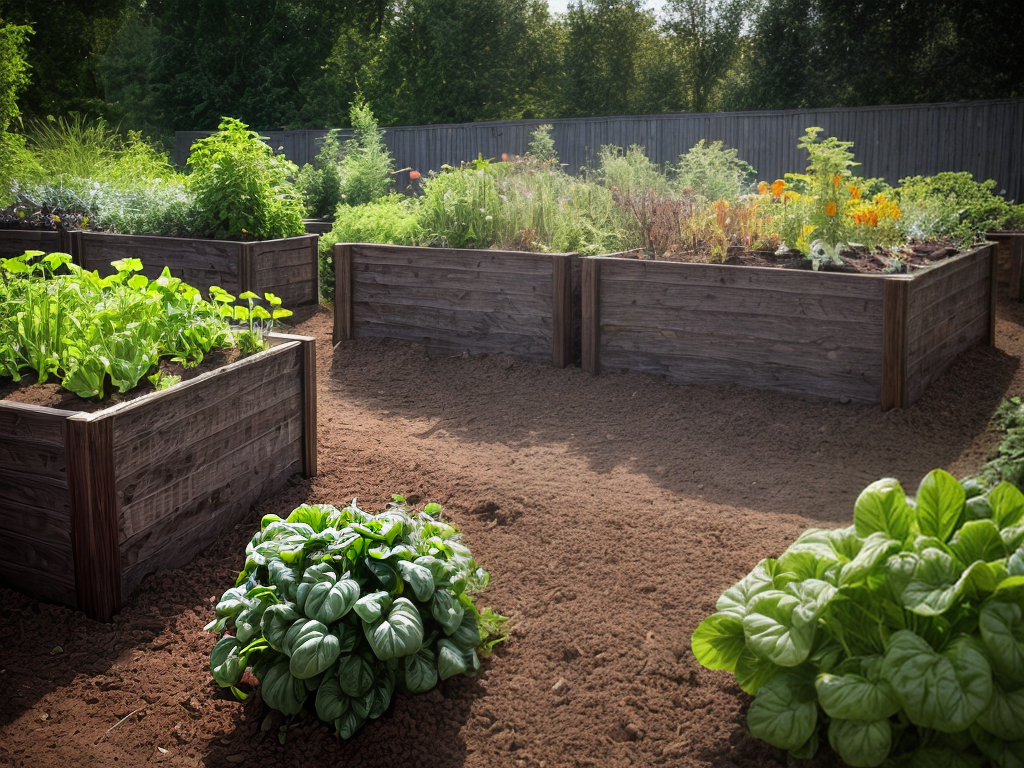
Did you know that organic composting can increase the yield of your veggie garden by up to 30%? In this article, I’ll share five simple and effective techniques to help you create nutrient-rich compost for your garden. From the traditional composting method to vermicomposting, bokashi composting, hügelkultur technique, and green manure cover crops, these methods will not only reduce waste but also improve the health and productivity of your plants. Let’s get started!
Traditional Composting Method
The traditional composting method utilizes the natural decomposition of organic materials to create nutrient-rich soil for your veggie garden. Backyard composting is an easy and cost-effective way to recycle kitchen scraps, yard waste, and other organic matter. To start, you will need a compost bin, which comes in various types. The most common options are the traditional compost bin, which consists of a container with an open bottom, and the compost tumbler, which allows for easy turning of the compost. Both types provide a suitable environment for the breakdown of organic materials into compost. When choosing a compost bin, consider factors such as size, ventilation, and ease of access for adding and removing compost. Remember to turn the compost regularly to ensure proper aeration and speed up the decomposition process. With the right compost bin and a little effort, you can create nutrient-rich soil for your veggie garden and reduce waste in a sustainable way.
Vermicomposting
My preferred method for organic composting in my veggie garden is vermicomposting. There are several benefits of vermicomposting that make it an excellent choice for gardeners. First, it produces a nutrient-rich compost that is full of beneficial microorganisms, which helps improve soil health and plant growth. Second, vermicomposting is a great way to reduce food waste, as worms can efficiently break down organic matter, including fruit and vegetable scraps. To set up a vermicomposting system, you will need a worm bin, which can be purchased or made at home using a plastic container with drainage holes. Fill the bin with bedding materials such as shredded newspaper or cardboard, and add worms. Then, add your kitchen scraps regularly, making sure to bury them in the bedding. Maintain the moisture level and avoid overfeeding the worms to keep the system balanced. With a little care and attention, vermicomposting can provide you with a steady supply of nutrient-rich compost for your veggie garden.
Bokashi Composting
How can I incorporate bokashi composting into my organic gardening practices? Bokashi composting advances the process of composting by using effective microorganisms to break down organic matter. It is an anaerobic fermentation process that allows you to compost both kitchen scraps and garden waste, including meat, dairy, and bones. To start, you will need a bokashi bin, which is an airtight container that can be stored indoors. Simply layer your organic waste with bokashi bran, which contains the effective microorganisms, and seal the container. The microorganisms will ferment the waste, creating a nutrient-rich compost. After a few weeks, you can bury the fermented waste in your garden or add it to your traditional compost pile. Bokashi composting is a convenient and efficient way to recycle organic waste and improve the health of your soil.
Hügelkultur Technique
To incorporate the Hügelkultur technique into my organic gardening practices, I utilize the benefits of a raised bed made from decomposing organic materials. This technique offers several advantages for a thriving vegetable garden:
- Improved soil fertility: As the organic materials break down, they release nutrients into the soil, providing a rich environment for plant growth.
- Enhanced water retention: The raised bed structure helps retain moisture, reducing the need for frequent watering.
- Natural weed suppression: The layered organic materials create a barrier that inhibits weed growth, minimizing the need for manual weeding.
- Long-term sustainability: Hügelkultur beds can last for several years, eliminating the need for frequent rebuilding or replacement.
- Increased soil aeration: The decomposing organic matter creates air pockets in the soil, promoting root health and nutrient absorption.
To ensure success with Hügelkultur, consider the following tips:
- Start with larger woody materials at the bottom for better stability and long-term decomposition.
- Layer different organic materials, such as leaves, grass clippings, and kitchen scraps, to create a diverse and nutrient-rich bed.
- Water the bed thoroughly after construction to initiate the decomposition process.
- Monitor moisture levels regularly and water as needed to keep the bed moist but not waterlogged.
- Allow the bed to decompose for several months before planting to ensure proper breakdown and nutrient release.
Green Manure Cover Crops
What are the benefits of incorporating green manure cover crops into my veggie garden? Green manure cover crops offer numerous benefits to your veggie garden. They help improve soil fertility, control weeds, prevent erosion, and enhance overall soil health. By planting specific species of green manure cover crops, you can tailor their benefits to suit your garden’s needs. Here is a table showcasing some popular green manure species and their benefits:
| Green Manure Species | Benefits |
|---|---|
| Clover | Adds nitrogen to the soil, improves soil structure |
| Rye | Suppresses weeds, prevents erosion, adds organic matter |
| Buckwheat | Attracts beneficial insects, improves soil structure |
| Alfalfa | Fixes nitrogen, enhances soil fertility |
| Mustard | Suppresses soil-borne diseases, adds organic matter |
When selecting green manure cover crops, consider your soil type, climate, and desired benefits. By incorporating these cover crops, you can create a healthier, more productive veggie garden.


